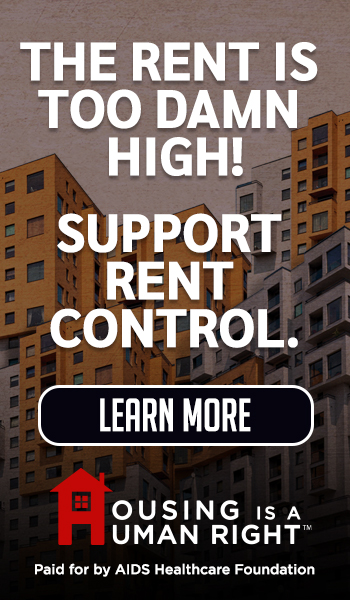Comments
iAUDIT! - If you’ve been reading my columns for a while, you may notice I rarely quote the total cost of Los Angeles’ homelessness response. When I do, I generally use a range of between $2 billion and $4 billion per year. That seems like an awfully broad variation, but the truth is there really no way of telling how much local government spends on homelessness, because budgets are fragmented and sometimes buried in the programs of dozens of city and county departments. For example, the City of Los Angeles’ “White Book” is a two-volume, 1,040-page detailed view of the city’s fiscal year 2024-25 budget. Pages 985 to 1009 cover the homelessness budget, which at the time of publication totaled $960.7 million but has since increased, due to state grants, to about a billion dollars. The County’s Homeless Initiative office has a $783 million budget, but that will increase to $908 million in fiscal year 2025-26, due in part from new revenues from Measure A. Other County homelessness-related costs are buried in the details of various county departments. LAHSA’s budget mostly consists of contributions from the City and County, but its other funding sources add another $200 million to the region’s homeless costs. Therefore, $2 billion is a conservative estimate of Greater LA’s homelessness costs.
So where does my high-end estimate of $4 billion come from, and how accurate is it? My answer is it comes from what we know about costs outside the official homelessness budgets, and it is no more or less accurate than other estimates, since government agencies themselves don’t know. Let’s use the LA Fire Department as an example. The City’s homelessness budget includes $1.569 million for fire vehicles, staffing, and equipment dedicated to homelessness medical emergencies, primarily in the Skid Row area. However, there are other—far higher—costs not in the homelessness budget. For example, in 2021, the LAFD estimated 54 percent of its fire calls were related to homelessness encampments. The fiscal year 2024-25 budget for fire suppression is about $398.9 million; 54 percent of that cost would be $215.3 million. You could safely add 10 to 20 percent for administrative and support costs. Emergency medical calls account for $239.4 million. There is no reliable estimate of the number or costs of medical calls related to homelessness, but the two busiest fire stations for EMS calls are in Skid Row and near MacArthur Park. It would be safe to assume a high proportion of EMS costs are homelessness-related; besides the high rate of substance abuse and mental health crises among the unhoused population, homeless people have fewer options for urgent care than the housed, so they are more likely to require a 9-1-1 response.
The Police Department also budgets specifically for homelessness programs. According to the White Book budget detail (page 995), police costs for FY 2024-25 total $9.4 million, of which $8.3 million are budgeted for overtime dedicated to interim housing sites. Note the cost is for overtime only—not regular time spent responding to calls at shelters. And that cost is just for interim housing; it says nothing about the thousands of permanent supportive and other housing for the homeless all over the city, nor the costs related to homeless people on the street. We don’t know how much of the LAPD’s $1.9 billion budget is spent on homelessness, but to give you an idea, consider a recent Westside Current article on police calls at Project Homekey sites. The article details the near-constant stream of calls for everything ranging from disturbing the peace to attempted murder. Project Homekey facilities operate under the No Barrier policies of Housing First, meaning residents with mental health or substance abuse issues are not obligated to seek treatment. Compounding the no barrier policies, the County is infamous for failing to provide support services for people in supportive and other housing, meaning the police are caught in a constant cycle of responding to the same calls associated with the same people. As the article’s charts show, mental health crises are one of the most common police calls. Battery and domestic violence are close seconds.
Then there are costs associated with money redirected from their budgeted purposes to address the consequences of widespread homelessness. As detailed in another Westside Current article, much of the Department of Recreation and Park’s $140 million maintenance budget is spent on repairs due to homeless encampments and security needs. Routine maintenance is deferred at many parks because of the costs of security and critical repairs caused by encampment dwellers.
One of the lesser-known departments involved in homelessness issues is the Housing Authority of the City of Los Angeles (HACLA), a semi-autonomous agency whose costs are not included in the City’s regular budget documents. (HACLA should not be confused with the L.A. Department of Housing, which is part of the city’s operating budget). In fiscal year 2024, HACLA’s expense budget was $2.04 billion. According to its budget document, HACLA’s mission is to manage and expand the city’s affordable housing stock. Many of its programs are intended to prevent homelessness through subsidized housing. For example, the Homeless Initiative Program (HIP) budgeted $5.5 million to assist homeless people secure housing. Another $57.8 million is spent on Continuum of Care support, which pays for supportive care provided by the County to people in permanent housing facilities. In total, HACLA projected it would spend $818.6 million to reduce and alleviate homelessness (page 4).
In addition to the City’s costs, the County’s Homeless Initiative Office budgeted $783 million for homelessness services in fiscal year 2024-25 $311.5 million was budgeted for permanent housing and support services. $240.7 million will be spent on interim housing beds, and another $65.5 million was budgeted for outreach and engagement teams to help people living on the streets. The budget for FY 2025-26 will increase by $125 million to $908 million. Like the City, various County départements incur costs that are not included in the Homeless Initiative budget. For example, the Department of Mental Health funds crisis intervention teams, which serve the housed and unhoused. The Department does not record the housing status of its crisis team clients, so there is no way to tell what its costs are for homeless-related calls, but again we can assume housed people have paths to mental health resources the homeless do not, so many of the team’s costs are probably associated with the unhoused.
Like the City, the County’s homelessness costs extend beyond its own operating departments. The fairly new L.A. County Affordable Housing Solutions Authority (LACAHSA) will be a prime beneficiary of Measure A’s new revenue stream, receiving about $400 million to create new affordable housing and preserve existing low-income housing.
When you add all the associated and indirect costs to the $2 billion directly budgeted, you can easily get to $4 billion and beyond. To put that into perspective, $4 billion means we are spending $53,330 for each of the roughly 75,000 homeless people in Los Angeles County; that is about 120 percent of the 2024 per capita income of $44,320.
What are we getting for the money? According to budget information and recent audits, the answer is not much. The City Controller’s Homelessness Dashboard for Inside Safe shows a total expense of $367,581,720. The program has served 4,037 clients, for an average cost per client of $91,050. 905 clients have been housed, for an astonishing cost of $406,170 per person. And that’s just to get the person housed; the continuing costs for the housing itself and for keeping people housed are in other budgets. (The total cost to house someone through Inside Safe may exceed $2 million per person).
For all the money spent, we really don’t know how many people have been served. A 2019 L.A. City Controller audit of LAHSA’s outreach programs showed that people who enter shelters, then leave and return after more than a month are counted twice. Similarly, a 2025 assessment from the audit firm Alavarez and Marsal (A&M) ordered by federal judge David O. Carter revealed there are multiple opportunities to count the same person more than once as he or she moves through the shelter-housing system. The City, County, and LAHSA heavily rely on claims of increased services to justify the rising costs of homelessness programs. On December 9, 2024, Mayor Bass’ office issued a press release ponderously titled, “Delivering Results In 2024: Comprehensive Homelessness Strategy Nearly Doubles Permanent Housing Move-Ins Since Mayor Bass Took Office, Thousands More People Moved Inside Than in 2022”. In the release, the Mayor claimed more than 23,000 people moved into temporary housing in 2024. However, taking the Controller’s 2019 audit and A&M’s report into account, it is entirely possible that those 23,000 people include an unknown number of clients who moved in and out of shelters as many as six times in one year and were counted as unique each time. The Mayor’s press release was followed the next day by an audit from the City Controller that showed shelter bed occupancy never exceeded 78 percent over the five years covered in the report, and fewer than 20 percent of those in shelters were permanently housed, with nearly 50 percent falling back into homelessness, some of whom fed the cycle of multiple counts noted in the 2019 audit. What the Mayor’s report actually recorded was the repetition of a temporary housing process 23,000 times, and that process has little relation to the number of people actually served.
Whether the true costs of LA’s homelessness programs are $2 billion or $4 billion, or somewhere in between, there can be little doubt taxpayers are not getting what they’re paying for. A long history of audits and reports shows the numbers published by the City, County and LAHSA are unreliable, containing duplicate client counts, and little accounting for the money that’s spent. We need a whole new culture of accountability to assure taxpayers—and the homeless themselves—they are getting the services they deserve.
(Tim Campbell is a resident of Westchester who spent a career in the public service and managed a municipal performance audit program. He focuses on outcomes instead of process in his iAUDIT! column for CityWatchLA.)
















